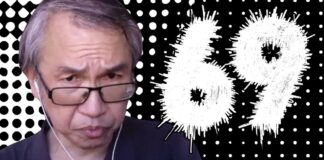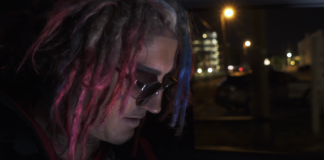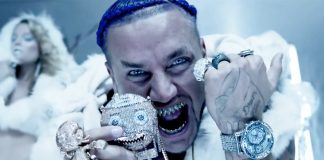
Female empowerment, underlying inherent roots, and creative evolution.
In a recent interview with Ross Scarano of Complex, soft-spoken R&B staple artist The-Dream eloquently touches on the importance of understanding the relationship between the musical expression of rhythm and blues throughout the 20th century, the delicate genre overlap of Pop and R&B as of late, and the release of his new 2-part EP project Crown. What is interesting about The-Dream and his musical career thus far lies not only his involvement in the creation of various R&B and Pop hits for other artists or his ability to make his take on Hip-Hop tender…he also tends to subtly circumvent the typical misogynistic mantra that permeates such genres.
To understand where music is now and why so many genres, like modern R&B and Pop, seemingly overlap fluidly in the present, The-Dream explains that one must first be able to understand from where these genres are drawing reference and inspiration. This requires a trip through American history in a sense, because what inspires us now was also inspired by something else that predated it too- essentially a never-ending cycle of “who started this first?” We can start from the present and work our way backwards, and in the process, potentially finding a parallel commentary of American society. The beautiful and useful dynamic between continual musical expression and the progression of American society is the insight it gives us to the feelings, ideals, and struggles experienced by the actual people of the time period, from an artistic viewpoint.
For Terius Youngdell Dash, known to us as The-Dream, the history of the culture from which he has been immersed has directly influenced the way he chooses to express himself and his take on R&B, Hip-Hop, and even Pop. In 1980 at 3 years old, Dash and his mother moved from North Carolina to Atlanta, where the genesis of his musical expression ensued. In elementary school, he successfully picked up the trumpet, which eventually led to learning how to play the guitar and drums. Despite years of being surrounded by raw music, it was not until the death of his mother in 1992 that he began composing songs in-full. His mother’s death and their close relationship also had a significant effect on his song writing direction, inspiring him to frequently direct his lyrics towards female empowerment. Without looking into it, one may not know that The-Dream has co-written the international girl-power hits: “Umbrella” by Rihanna, “Me Against The Music” by Britney Spears, and “Single Ladies (Put a Ring on It)” by Beyoncé. In some ways, the messages in The-Dream’s work liken that of Tupac Shakur, exemplifying a artistic duplicity strained between his inner appreciation for the female sex and the overt internalized misogyny that permeates most of R&B and Hip-Hop.

Like all forms of expression, once released into the world it is subject to observation, criticism, and ultimately scrutiny. The problem with music, R&B and Hip-Hop specifically (though not exclusively), is until recently subconscious messages of misogyny, violence, and stereotypes went relatively unchecked by the mainstream media. There have always been voices in opposition of these fundamentally influential messages, it’s just that now there are significant and identifiable followings aimed at exposing, challenging, and dismantling such messages. And it’s not just the musical world that’s subject to this ethos- the film, advertising, and television industries are all being viewed through the same lens. It’s 2015. This is good, this is progressive, and this is what is needed: a consistent worldwide dialogue geared towards the evaluation of popular culture trends that contain messages which evolve from simply being “what we watch and listen to in our free time” to “how we systematically treat different types of people within a society, as a society.” The-Dream is not to be viewed as the soul proponent for either side (of any debate, really), but as a tangible example that can be juxtaposed with broader cultural themes. This goes far beyond misogyny and sex-relations too! Class inequality, race issues, societal corruption- all of these themes are up for grabs, folks.
Looking forward, the recent full release of the Crown EP on iTunes has already sparked conversation in regards to its lyrical and compositional talent. As with all things, there are viewpoints from both sides and at the end of the day just talking about it is active promotion of dialogue. What is more important is viewing The-Dream and others with cultural influence as representatives of the Millennial generation, and further, Generation Z (the new kids on the block growing up in a hyper-technological age.) What are they saying, and how is it being heard? When you are in the midst of pop culture happening, it is difficult to step back and observe it from a non-participatory standpoint…but in a society of continual review and viral phenomena, we are doing it anyway- lets just try and make some of the observation more than one-dimensional ratings and “likes.”
My personal opinion of the Crown EP? The beats and melodic harmonies are current, sensual, and reminiscent of his 2007 album Lovehate…at times. The lyrics leave something to be desired metaphorically, although I don’t think this was meant to be a statement piece so much as something we can simply vibe to (hence the free early full release on iTunes and partial release on Spotify.) I surprised myself with how many times I hit replay on track no.1, titled “Prime”…it is calming and aptly dream-like. I’m obsessed with the sample of a woman speaking French at the intro. There are also two features with T.I on the EP, who seems to always have his hand in some sort of project.
For now, The-Dream is working on a collaboration with iTunes in hopes of releasing his demos and future works in whatever formation and structure he sees fit- essentially getting his work to his fans in the easiest manner possible. Which seems to be, in my opinion, the dream.











